Casino Mobile App Onboarding Experience
The goal was to create an onboarding flow that felt intuitive, trustworthy and exciting. It needed to comply with gambling regulations while delivering a strong first impression that would entice new users to register and start playing.
- Design Exercise, Oct 2025
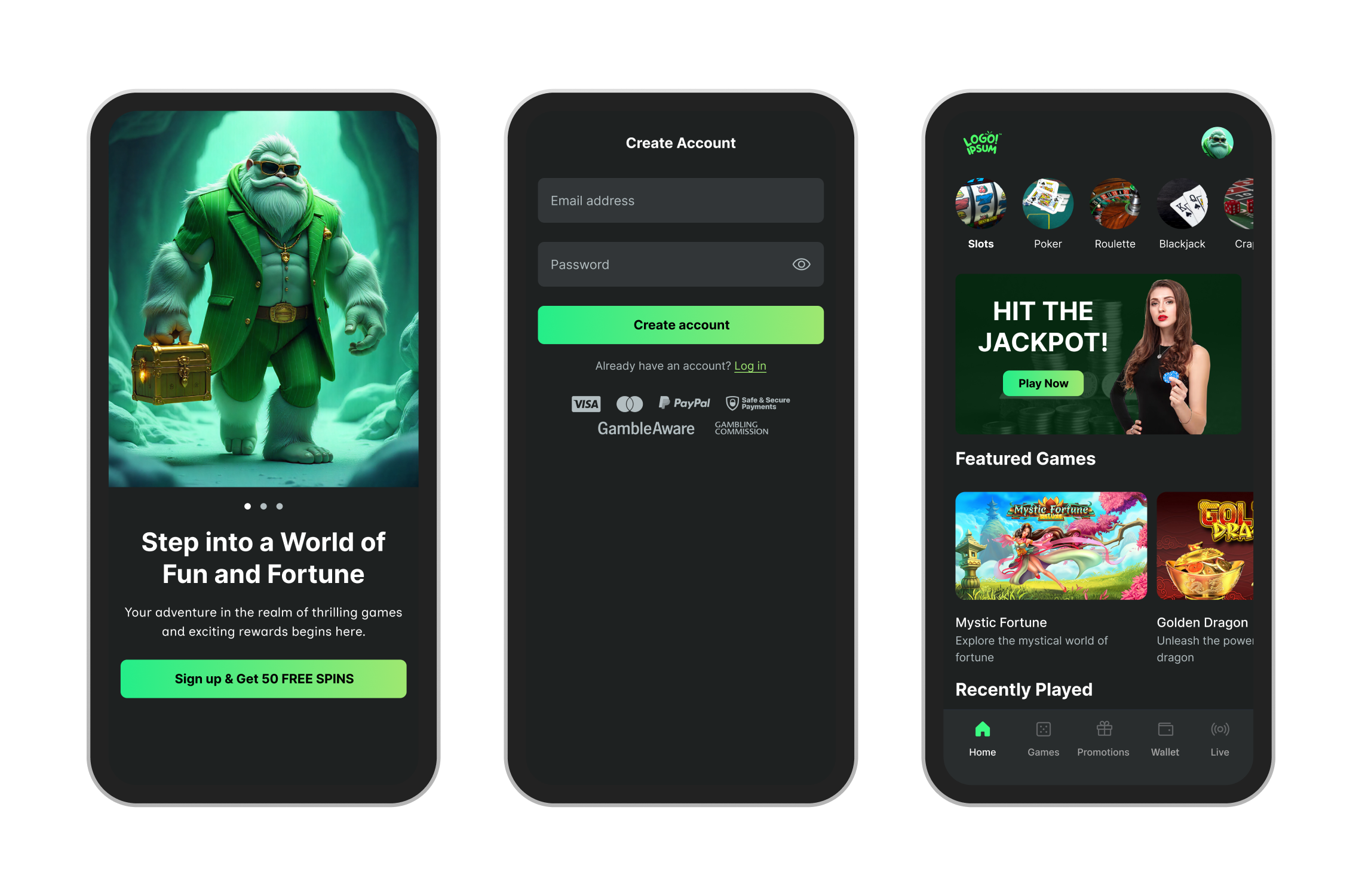
Objective
The primary objective was to improve the registration-to-lobby conversion rate, which sat at around 40 per cent. I wanted to simplify the process, reduce friction and use design psychology to build momentum from the first interaction through to the first game.
Equally important was creating a moment of delight to encourage sign-ups. Introducing a welcome reward or gift upon registration was designed to make users feel valued and to build anticipation for the casino experience that followed. The onboarding needed to be fast, engaging and optimised for mobile, setting the tone for the brand's digital presence.
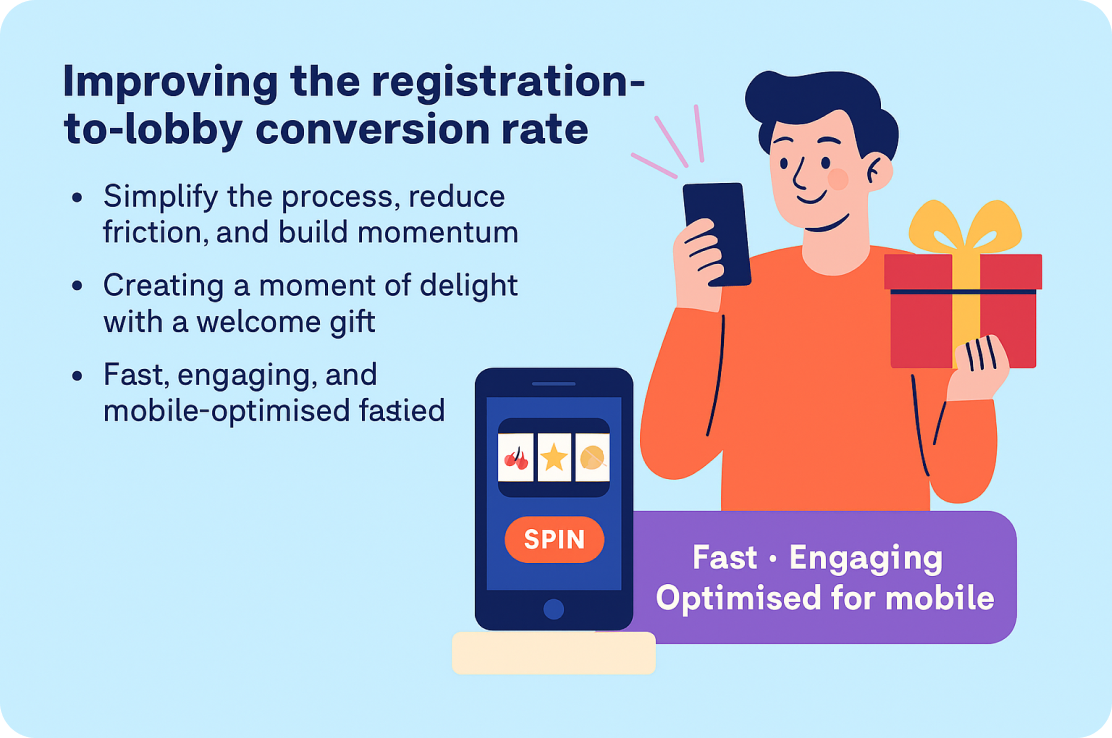
Research
I began by analysing behavioural data and user feedback from similar casino platforms. The research revealed key friction points in the current journey: long forms, compliance steps presented too early, and a lack of visible reward. These obstacles caused users to lose interest before completing registration.
I benchmarked leading casino apps such as Stake, BetMGM and 888 Casino. Each offered smooth onboarding, strong trust messaging and visual incentives that encouraged early commitment. The insights confirmed that a combination of simplicity, reassurance and excitement was essential. Users needed to understand the value of joining immediately and feel rewarded for doing so.
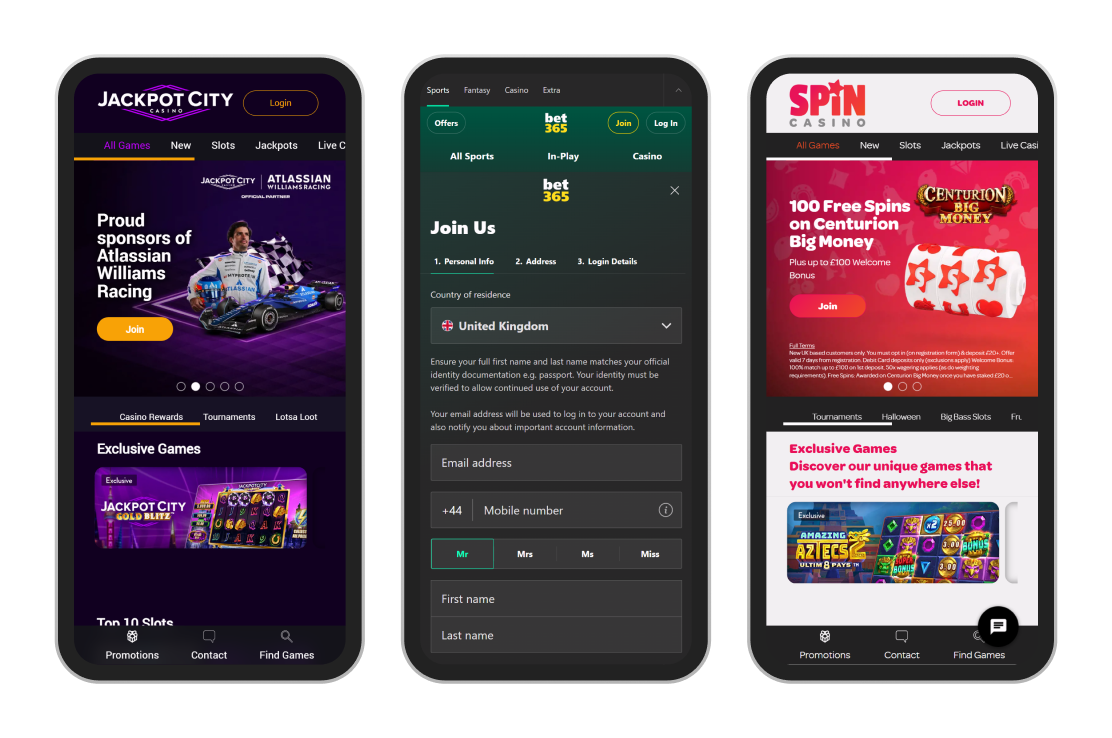

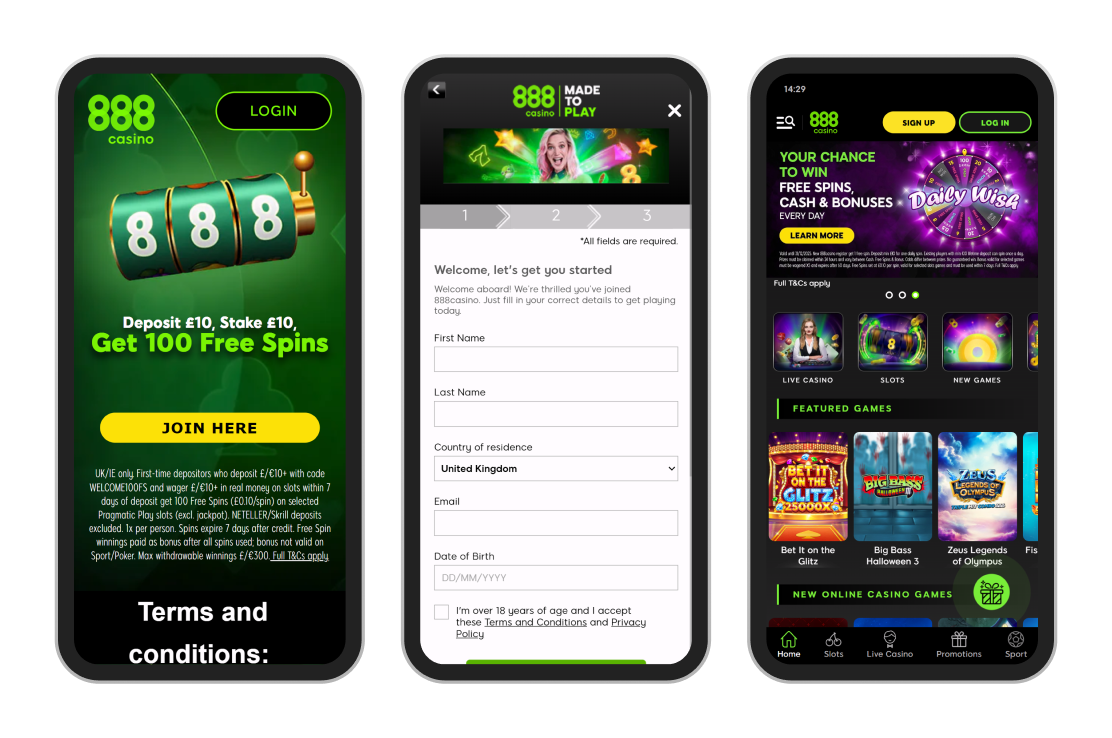
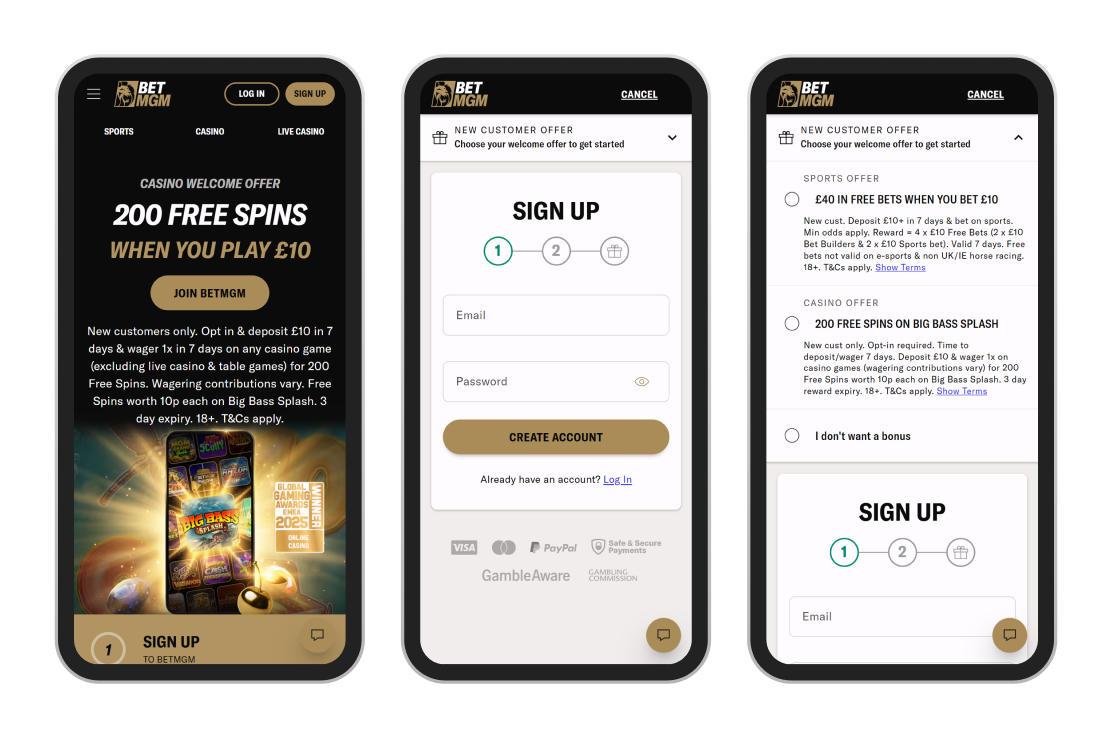
Personas
To better understand our audience, I developed three core personas that represented the most common player types.
The First-Time Explorer wanted to feel safe and informed while discovering the casino for the first time. They needed reassurance and clear guidance. The Casual Spinner preferred a quick and frictionless process, motivated by instant gratification and visual excitement. Finally, the Loyal Returner valued familiarity and efficiency, expecting to return straight to their favourite games with minimal steps.
These personas guided every design decision, ensuring the onboarding flow met the needs of each user type while maintaining consistency in tone and style.
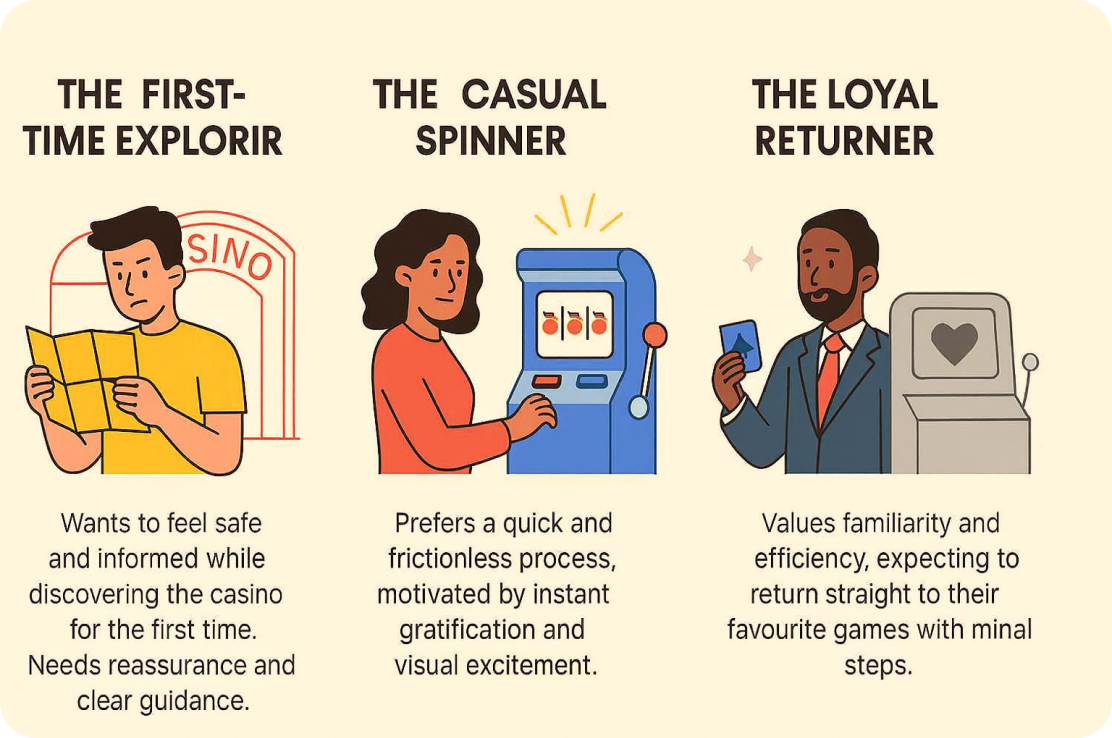
Concepts
Two creative directions were developed during the concept stage. The first explored a Luxury Dark aesthetic using gold accents and rich gradients to evoke a high-end, VIP atmosphere. The second was a Modern Vibrant approach featuring electric blue highlights, subtle neon lighting and contemporary iconography.
After testing both directions, the modern vibrant concept was chosen. It conveyed energy, inclusivity and excitement while maintaining a sense of trust. The mood was playful yet refined, aligning perfectly with the brand's ambition to attract both casual and committed players.
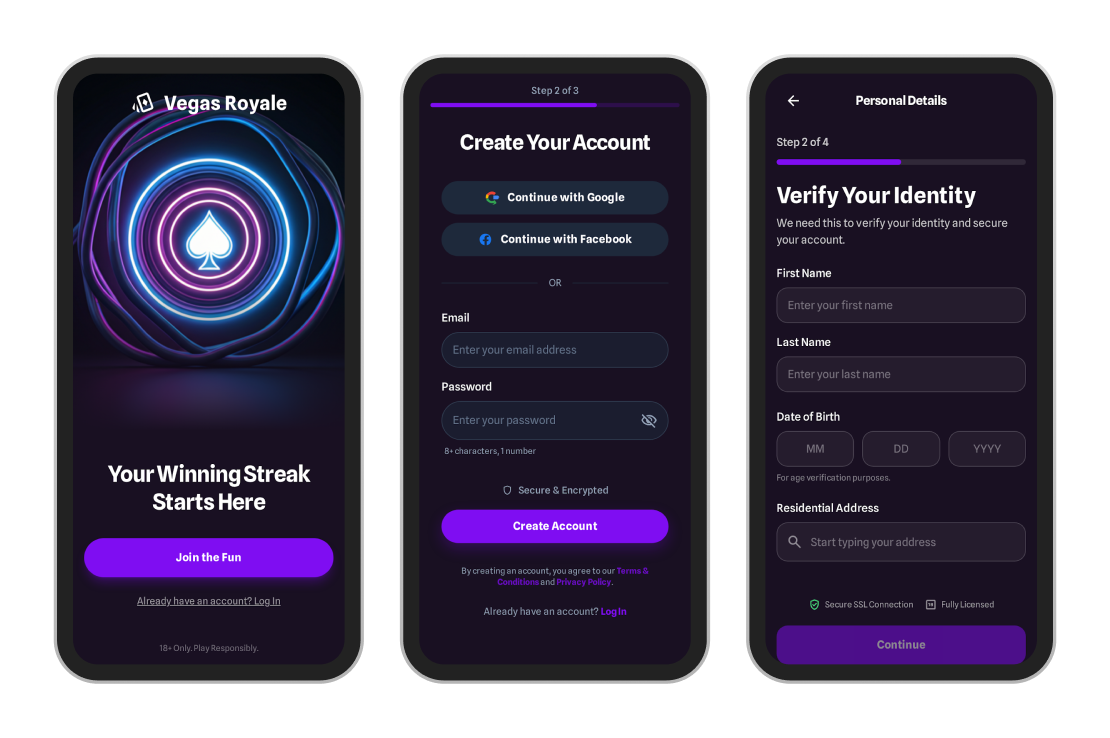

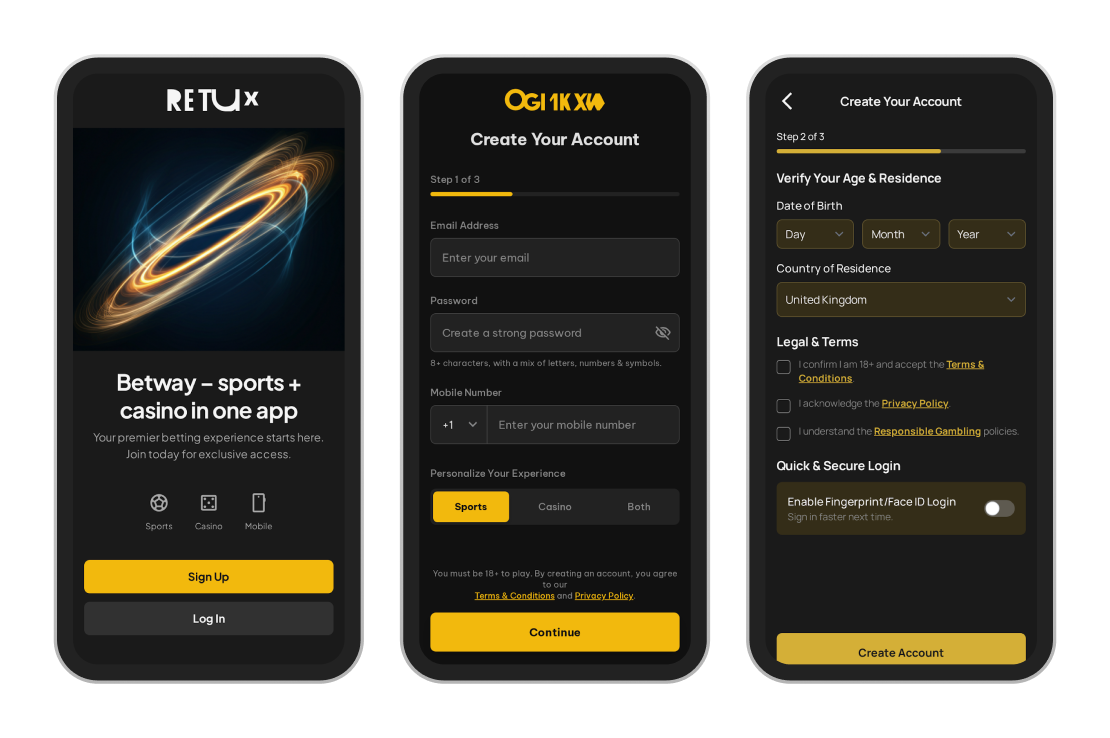
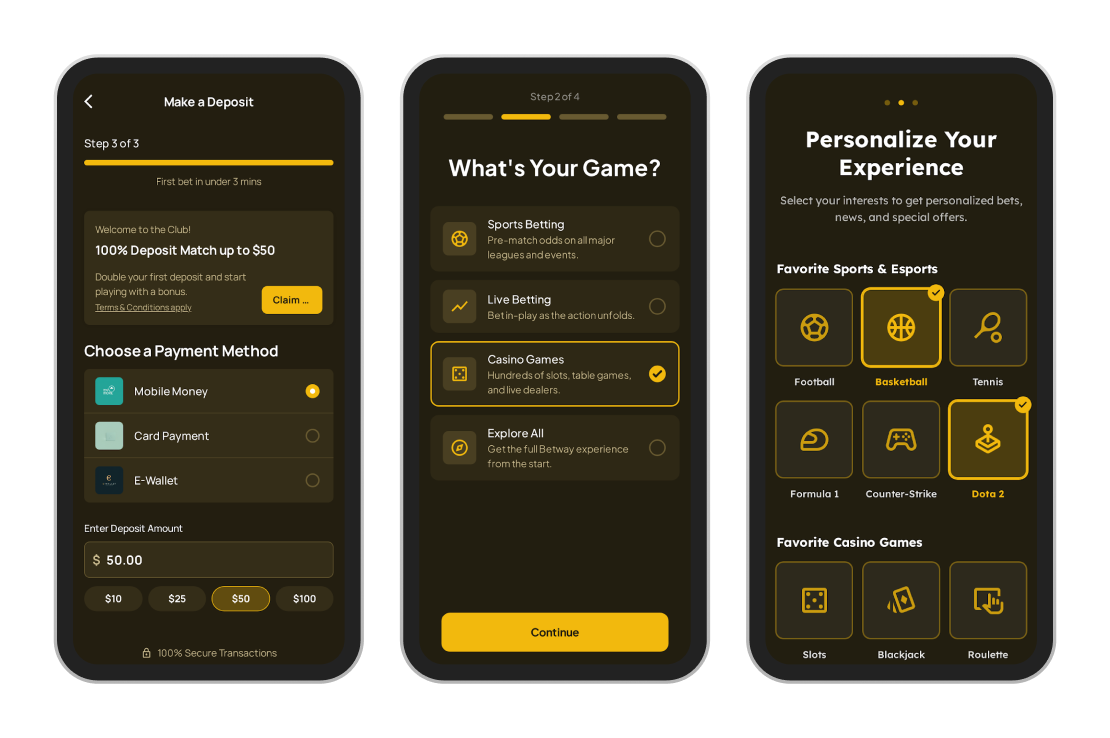
Wireframes
Low-fidelity wireframes were produced to establish structure and functionality before introducing visual design elements. These sketches helped validate user flow decisions early, ensuring every screen had a clear purpose and that users always knew what to do next.
Wireframes focused on concise forms, visible progress indicators and simple button hierarchies. The reward screen was prioritised as a motivational milestone, giving the project team and stakeholders an early visual understanding of how the “moment of delight” would work within the overall flow.

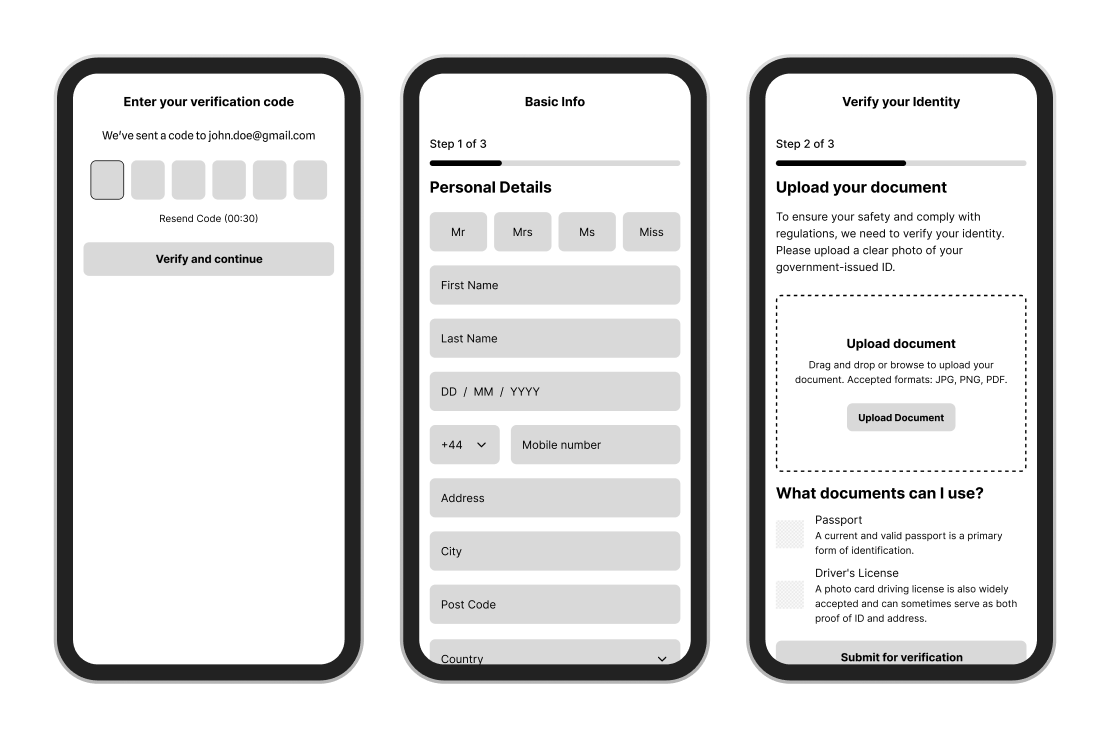

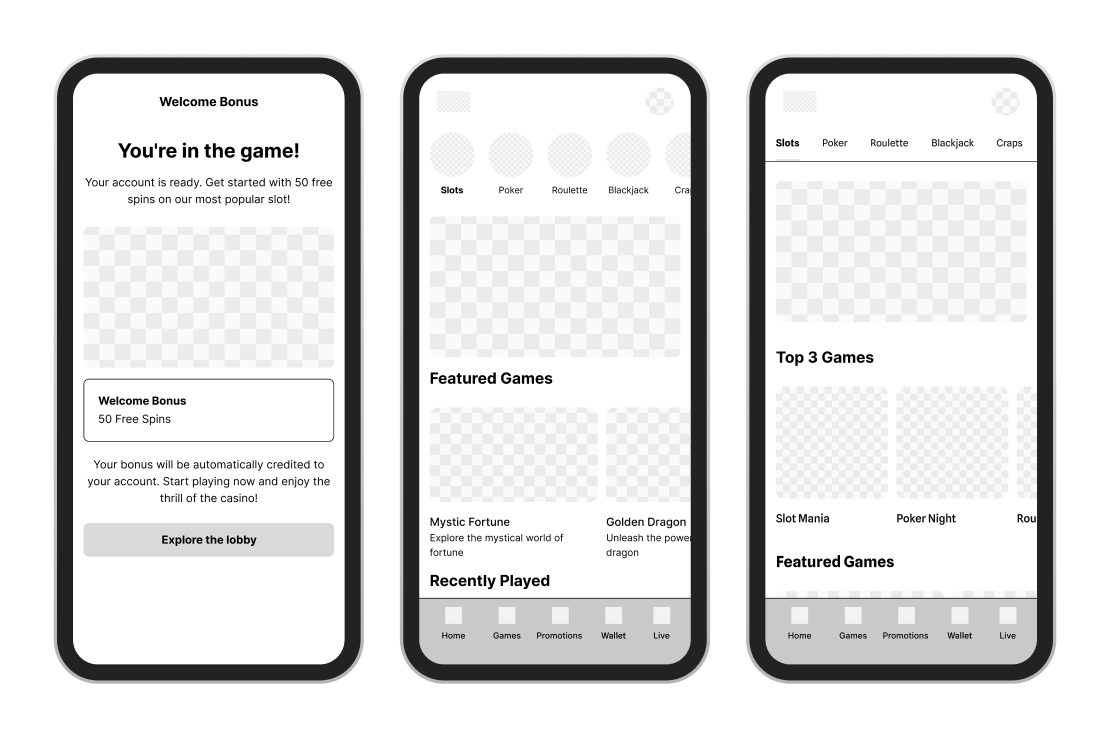
Visual design
Once the structure was confirmed, the focus shifted to crafting high-fidelity mock-ups. The visual design built upon the modern vibrant concept, combining dark gradients with electric blue highlights and soft glow effects. Typography was bold and legible, complemented by tactile button states and fluid motion cues.
Three key screens defined the onboarding experience:
- The Welcome Screen, introducing the brand with a clear invitation to join.
- The Registration Screen, streamlined for mobile entry with real-time validation and social login.
- The Reward Screen, celebrating successful registration with a welcome bonus and clear entry to the lobby.
The final designs balanced excitement and professionalism, guiding the user naturally through the process while reinforcing brand trust.
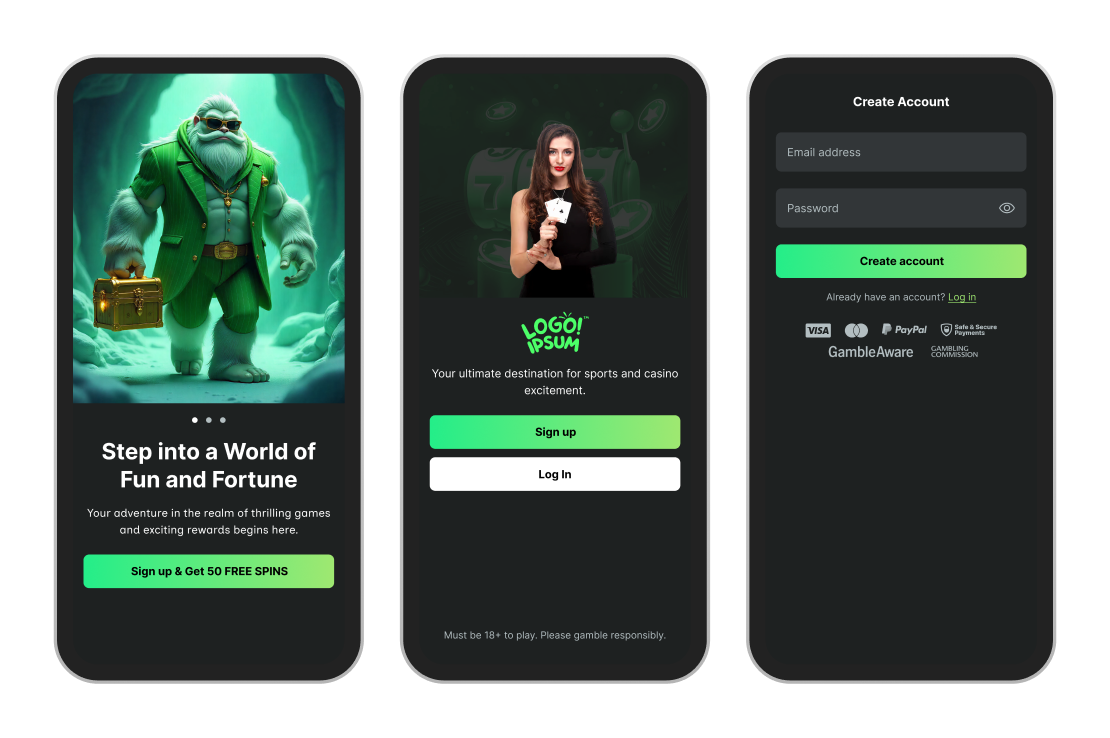
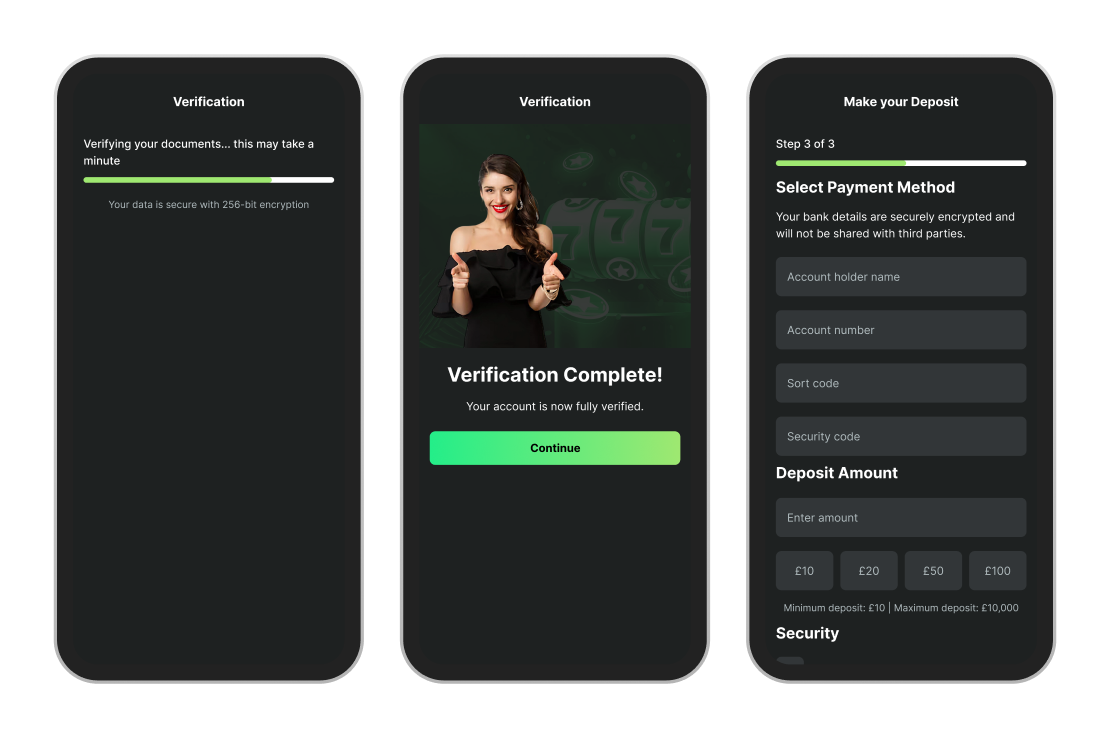


Impact and next steps
Early user testing suggested a significant improvement in perceived ease of use and engagement. Participants described the experience as “quick”, “rewarding” and “clear”. The new flow addressed the major friction points identified during research, resulting in a smoother journey from sign-up to gameplay.
Projected outcomes include a 25 per cent increase in conversion, a 15 per cent reduction in form abandonment and a 20 per cent rise in first-session engagement. Future iterations will explore personalisation within the lobby, tailored recommendations, and the introduction of guided tours for new users. These next steps will help sustain momentum beyond the initial registration experience.

AI usage
Artificial intelligence was used to support efficiency and creativity throughout the project. ChatGPT helped generate design prompts, UX copy and presentation materials, while Google Stitch AI produced multiple visual variations of the onboarding flow. These AI-generated outputs were carefully curated and refined in Figma to ensure quality, accessibility and compliance with gambling industry standards.
The use of AI accelerated the exploration phase, enabling rapid iteration and allowing more time for human-led design refinement. It served as an assistant to enhance ideation and production speed, rather than replacing the creative process. All decisions, final layouts and visual refinements were made by designers to maintain professional integrity.
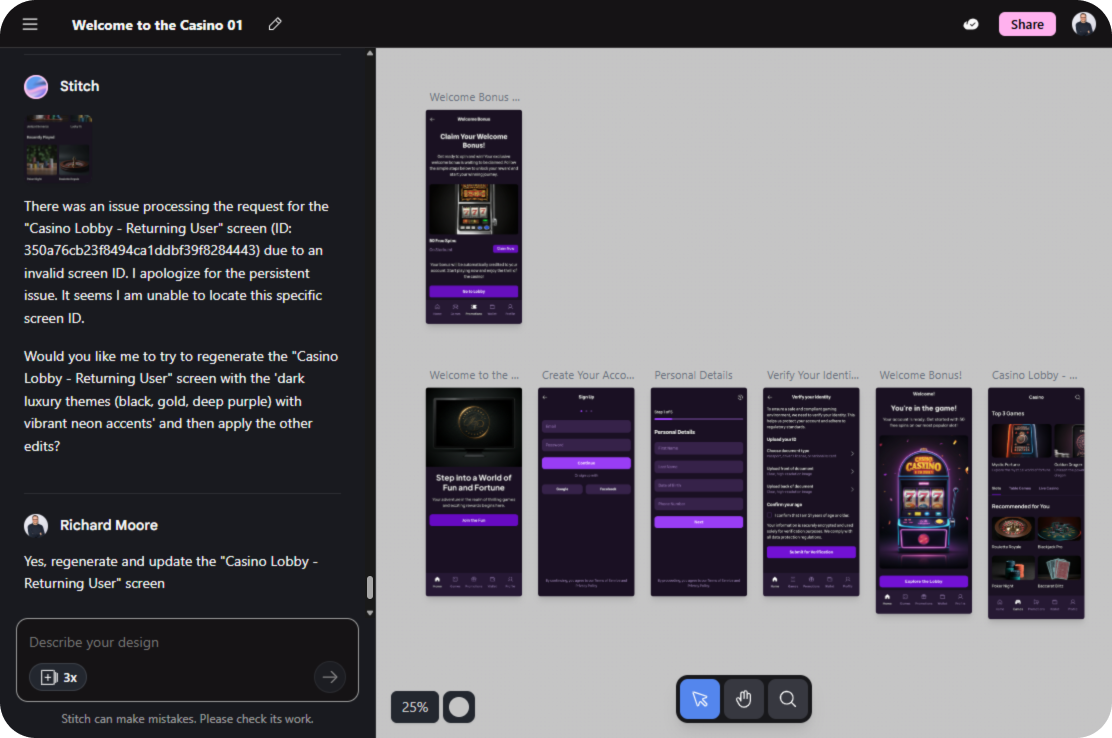
Conclusion
The redesigned onboarding experience demonstrates how a strategic blend of simplicity, motivation and trust can significantly enhance user engagement. By reducing barriers, introducing a sense of celebration and connecting users quickly to gameplay, the new flow creates a positive first impression that strengthens brand loyalty from the outset.
This project highlights the importance of emotional design in the gambling sector. The welcome reward not only provides immediate value but also sets the tone for continued play. The outcome is a mobile-first, conversion-driven onboarding journey that aligns user goals with business success, setting the foundation for future growth and innovation.